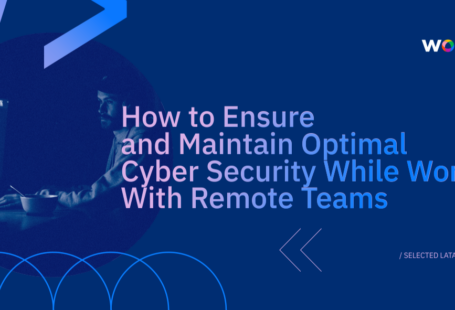According to data compiled by the Growth Everywhere blog, currently at least 20% of the workforce corresponds to remote work teams within the growing digital companies.
To give you an example, we recently published in Workana a case study of the Asian multinational Ctrip, one of the major travel agencies within the global scenario with over sixteen thousand employees.
Through a project that allowed a large percentage of its employees choose to work at home, the company managed to increase productivity by a surprising 22% and save an estimated US$ 2,000 annually per remote worker, and even enhance the company’s satisfaction levels and of course, lower turnover rate.
Being open to remote working allows, among other things:
- Economy: especially related to physical workspaces, electricity, and hiring.
- Greater worker satisfaction: since they can balance their professional and personal life much better.
- Increase in productivity: remote workers report that it’s easier to stay focused without the common distractions that take place in a traditional office, but besides that, they can better manage their schedules and tend to need much less days off due to illness.
- Access to talent in different geographical areas: remote work allows you to dramatically expand the talent pool available to businesses, and also reduces the amount of time that is necessary to find a suitable candidate for the job.

It obviously represents many advantages, but for a virtual work team to well, work, one must have an organizational culture that takes into account their particular needs, and this means that companies that want to begin to integrate it into their dynamics need to undergo some general changes so that they can fit properly and achieve maximum performance.
In today’s post, we offer a detailed guide of the most common challenges that companies that use remote teams face as well as a list of best practices and strategies that will allow your company to overcome or avoid these problems in the best possible way.
Main challenges when working with remote teams

First, the difference between the objectives and challenges involved in working with remote teams must be very clear to you – both for companies and for employees – and the many unfounded myths that exist about it. Among the latter, it’s common to hear that remote workers:
- Aren’t committed to the company
- Have lower rates of productivity
- Are more likely to leave the company
- Incur more easily in unethical behaviors
In reality, none of this is true. These are simply wrong notions that reflect the ignorance that still exists over the tools and methodologies of remote working. On the other hand, that doesn’t mean it’s free of potential obstacles, among which we can mention:
- Communication difficulties: relating to the different time zone/language or cultural barrier.
- Following up on the work and productivity: It can be difficult to measure the critical performance indicators among remote employees.
- Feeling of being less important: On many occasions, remote workers don’t feel part of the company and consider that it gives more importance and benefits to on-site workers.
- Lack of integration with the team: By not sharing the same physical space with their team, the remote employee loses most opportunities of creating personal bonds with colleagues.
- Professional growth: Often, remote workers report they find most difficult to get visibility for their work, promotions and raises when working from home.
- Feeling isolated: In their study of the state of remote work in 2018, Buffer reported that the feeling of loneliness and isolation was a major problem that 21% of virtual workers faced.
Fortunately, the positive experience of hundreds of companies with remote teams shows us that, by implementing a series of good practices, it’s perfectly possible to overcome all obstacles assertively from planning dynamics of work.
At Workana, we detected seven strategic points that all successful remote teams share:
1.- Choose all employees properly
Not everyone has the ideal profile to work remotely. When recruiting a new remote employee, what we’re interested in, first of all, is that they rely on the knowledge and experience required for the role, but we’re also seeking a number of particular attitudes that promote assertive communication, teamwork, and self-management.

When integrating new members into your virtual team:
- Focus on result-oriented perspectives: Who have interests or attitudes that result in knowing how to use their time well and optimize results.
- Search for excellent oral and written communication skills: When we work at a distance, much of our communication with the rest of the team is done through writing, so it’s recommended to seek professionals that communicate clear ideas by these means.
- Prefer professionals familiar with self-management: That are disciplined and have previous experience with remote or independent work.
- Perform skill and productivity tests: You can implement a period of tests in critical activities for the job to get a feeling for their real work style.
- Favors candidates who socialize with ease: Contrary to what many people think, that the best remote workers are those who have an introverted personality or the lonely type, the best professionals for remote work are those capable of creating bonds and socializing significantly, even online.
2.- Share your purpose
The first step for people to identify with a project or a company is that they really understand what is the ultimate goal of their work, their efforts, and you can apply this of all kinds of employees, but especially to the remote ones.
When we feel part of something bigger, a mission team that matches our values and our expectations, it’s much easier to develop a sense of belonging that becomes loyalty and commitment. As such, review the way you are sharing your general goals to each one of your employees.
For example, our mission in Workana is very clear:
“Transform the world of work by offering autonomy, development, and equality for freelancers, independent of where they are.”

3.- Presentation of the entire organizational culture
Once the employee is motivated and willing to share your purposes, it’s time to start the onboarding process, to make clear what are the explicit and implicit values of the company. For example, one of the first things we establish with all our new employees are five values that we live and breath on a daily basis:
- Humility: DON’T seek the best for yourself, but for everyone
- Enjoys working with autonomy
- Love what you do, believe in what we are building
- Have flexibility and creativity in any situation
- Be direct and effective in communications
4.- Welcoming Process
Refers to the training process focusing on the company’s methodologies, protocols, work tools and, in general, everything that is related to the development of the employee’s activities. To get an employee to feel part of the team from the start and accelerate their learning curve in Workana, we resorted to a full welcoming process made up of:
1) Welcoming to the team that includes sharing a fun form with all team members.
2) Access to all operating and communication channels, along with its protocols and instructions.
3) Virtual Onboarding, complete with nice videos, inspirational content, market information, platform information, etc.
4) One-to-one meetings (virtual and physical) with the heads of each area to learn how the company is organized.
5) Weekly and monthly meetings where we share the company’s status.
6) All the materials and supplies necessary to develop the work in the best way possible.

5.- Joint and individual goals that promote professional development
The remote worker should be very clear on what are the expectations they must meet within their team, not so much in quantitative terms, such as the number of hours worked or number of solved issues, but in terms of qualitative results, both individually and as a group.
For example, it’s very different to say “answer customer’s questions from 9 am to 2 pm” and saying “offer personalized, humane and efficient attention that makes each and every customer 100% satisfied with the service and loyal to brand”.
One of the biggest and most frequent concerns of remote workers is that they can lose visibility and opportunities to achieve growth and promotions, so the productivity indicators or KPIs that we use to evaluate the work of each employee and the general growth of the area should also be intangible, transparent and always meet professional development.
6.- Using collaborative work tools
The email, traditional messaging services, and the phone are not always the most appropriate communication channels for a virtual team. Luckily, today there are many software options and specific tools designed to optimize collaborative and remote work. We’re referring to cloud applications, such as:
- Drive
- Slack
- Asana
- Evernote
- Teamwork
- Etc.
The features and investment in each of them will vary according to the needs of your project, employees, and customers. The most important is that you find the one most suitable for you and that you can take full advantage of it. If something doesn’t work very well, don’t be afraid to seek other alternatives: it’s essential to keep evolving and keep improving.

Other tools that can be very useful for managing the work of a remote team are the ones for distraction control and that showcase progress such as Time Doctor, Rescue Time or Workana Time Report. Finally, be sure to have a good program for video conferencing that allows you to make virtual meetings with multiple features such as screen sharing, giving presentations, etc.
7.- Bonding and team-building strategies
The technology, transparency, and commitment of all involved are key for the success of a remote work project, but managers of successful virtual teams know that this isn’t enough. You must have the icing on the cake: a collective casual communication dynamic that makes each member feel truly comfortable, connected and valued by their colleagues. This is precisely the aim of team-building strategies for remote teams.
One of the most popular is simply appointing a digital space as if it were an internal social network. Many collaborative work tools also have chats or community spaces for the entire team to use to share information that isn’t necessarily work-related.
At Workana, we always encourage our remote and on-site employees to take part in games and virtual dynamics, research, questions, etc. We also permanently organize spontaneous one-on-one video calls randomly distributed, meetings with the closest teams and the whole company, and anything that we can think of to strengthen our ties of fellowship.
Consider implementing entertaining and consistent challenges once in a while, and make sure that they’re aligned with the company’s values, such as productivity and creativity challenges or recycling, and give everyone the opportunity to share their hobbies, talents, and interests.

In your company, in your team, with your clients, are you taking advantage of all the benefits of remote work? Are you using the best tools? Are you establishing the best processes? We leave you with these questions so you can think them over.
______________________
Case study: how to manage your remote support team with the company Write.com?
Wrike.com is a company that offers a cloud-based collaborative work management software. In 2009, they took a chance on remote work, opening their assistance department, with only one employee at the time, Nic Bryson, who also had the mission of not only to start offering services to customers but also to grow the team to meet the business needs.
Nowadays, this company now has a completely remote department with more than fifty employees working from throughout America and Europe. For this manager, the key to success was to hire people with ease to connect and bond with other team members and clients through remote channels.
Some of the things that Bryson learned over the years managing a remote team with a considerable amount of members are as follows:
- Develop a good selection process: not everyone has the profile necessary to work remotely. We need proactive people, self-manageable, with an initiative to find solutions and improve processes as well as ease to connect with their teammates.
- Have clear indicators that reveal when an employee is having an extraordinary performance.
- Encourage staff to use chats such as Slack to talk and share news and content of personal interest.
- Go for the quality and not the quantity of communication.
- Offer real opportunities for professional development to retain talent and avoid turnover.
- Hold weekly video calls with the entire team to speak on common and personal goals, delegate tasks and recognize merit publicly.

Other excellent examples of how to build successful virtual teams can be seen at Dell, Harvest, and Basecamp. If these companies and many others are taking advantage of all the benefits of remote working, why aren’t you?





